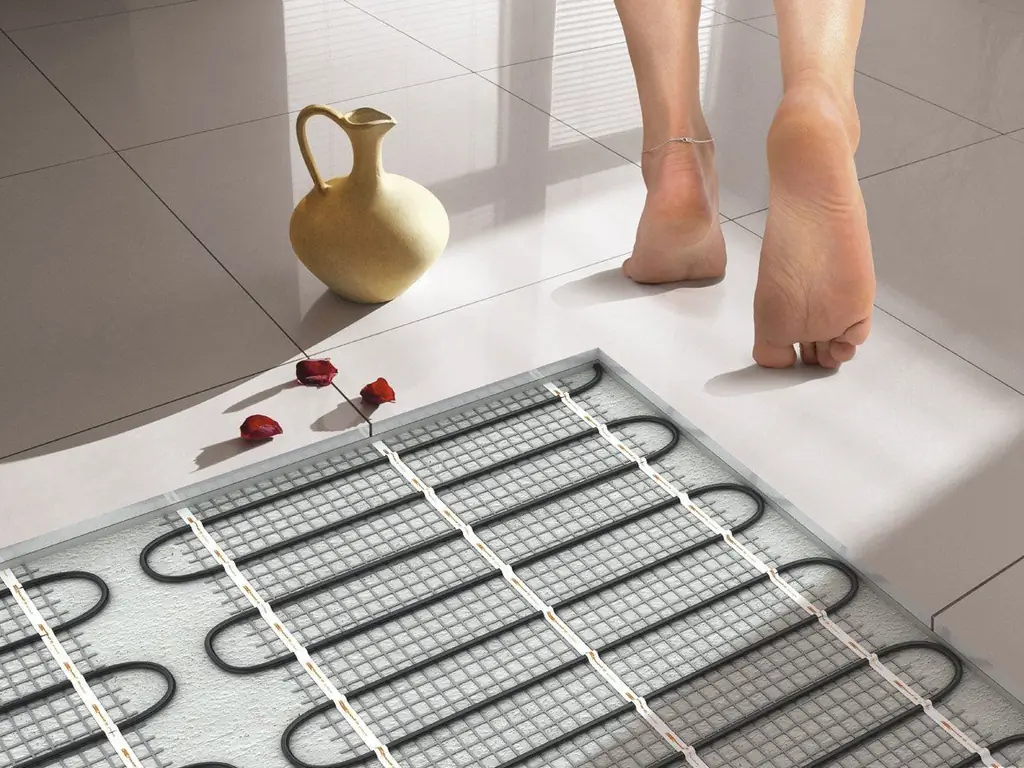
Table of contents:
- Author Bailey Albertson [email protected].
- Public 2024-01-17 22:26.
- Last modified 2025-06-01 07:32.
How to sew a pillowcase: sewing workshops

A rare thing is sewn as easily as a pillowcase. It does not require the construction of complex patterns and a variety of materials. Often, a pillowcase can be sewn from a single piece of fabric with a minimum of seams. Even novice needlewomen, completely inexperienced in sewing, can cope with the manufacture of pillowcases. Today we will tell and show how pillowcases of various shapes and types are sewn. Square and rectangular, with "ears" and zippers, sleeping and decorative - we will try to cover all types of pillowcases and share the secrets of fast and high-quality tailoring. We offer step-by-step instructions, useful tips and interesting ideas that will make your task easier.
Content
-
1 Types of pillows in shape and size
1.1 Photo gallery of pillowcases that you can sew with your own hands
-
2 Required materials
2.1 How to choose a fabric and calculate its consumption
-
3 Wrap pillowcase
- 3.1 Step by step process (photo gallery)
- 3.2 Video tutorial
-
4 Pillow with "ears"
4.1 Video tutorial on sewing a pillowcase with "ears"
-
5 Zippered pillowcase
- 5.1 Step by step process (photo gallery)
- 5.2 Video tutorial
-
6 Beautiful pillow of small patches (patchwork)
- 6.1 Step by step process (photo gallery)
- 6.2 Video tutorial
-
7 Decorative pillowcases for sofa cushions
7.1 Photo gallery of decorative pillows
Types of pillows in shape and size
As a legacy from the Soviet era, we got large down pillows measuring 70 * 70 cm. Each house had a set of such oversized pillows, and standard bedding sets were guided (often still are) based on these sizes. The market era, which declares the richness of choice always and in everything, has not bypassed the sphere of bedding. Firstly, the competition between down and feather is now a mass of innovative fillers. Secondly, pillows now come in a variety of shapes and sizes. Along with square pillows, rectangular pillows have gained popularity, and equilateral pillows have gained smaller dimensions in accordance with European standards. We are not even talking about non-standard orthopedic pillows with a memory effect and repeating anatomical shapes.
Rectangular pillows have harmonious proportions with a side difference of 20 cm. Standard rectangular pillows, which have earned worldwide recognition, have dimensions of 70 * 50 cm and 60 * 40 cm (children's version).
Square pillows can have dimensions 60 * 60 cm, 50 * 50 cm, 40 * 40 cm. Small pillows are most often not intended for sleeping and are decorative.
The principle of sewing a square and rectangular pillowcase is the same. The main difference comes to light when constructing a pattern and is in the consumption of fabric.
Photo gallery of pillowcases that you can sew yourself
-

pillows in pillowcases with "ears" - Pillowcases with "ears"
-

rectangular pillows -
Rectangular pillowcases
-

square pillows - Square Zip Pillowcases
Necessary materials
To make any pillowcase we need:
- The cloth.
- Sewing machine.
- Threads, preferably reinforced, matching the color of the fabric.
- Tape measure.
- Chalk or fabric marker.
- Scissors.
- Safety pins.
If you decide to sew a pillowcase with a zipper, then add to this list also a zipper to match the fabric, its length should be equal to the width of the pillowcase.
How to choose a fabric and calculate its consumption
Particular attention should be paid to the choice of fabric. For the sleeping pillowcase, natural cotton materials are chosen: chintz, calico, satin. Fabrics vary in density and weave. Choose a quality fabric considering the high stress and wear and tear on your bedding. The cheapest fabric looks bad and won't last long.
Calculate in advance how much fabric you need for one pillowcase, take into account the possible shrinkage of cotton after washing, multiply by the number of pillowcases, and only then go shopping.
So, for the manufacture of one pillowcase 70 * 70 cm with a smell of 20 cm, you will need a piece of fabric measuring 170 * 75 cm, and for a rectangular pillowcase 50 * 70 cm - a piece with dimensions 170 * 55 cm. Do not forget to calculate the seam allowances, fabric supply, which will be required on the "ears" or sewing in a zipper, if the selected model requires it.

Approximate pattern of a pillowcase with a valve on a pillow 70 * 70 cm
For example, with a fabric width of 220 cm, you will need a 175 cm cut to sew three 70 * 70 cm pillowcases or four 50 * 70 cm pillowcases.
When choosing a fabric, pay attention to the fabric with a small pattern - it does not need to be adjusted when sewing. If your choice falls on a large drawing, it may have to be taken into account when cutting. So, large flowers or animals should not be cut: they must fit entirely on at least one side of the pillowcase.
Before you start sewing, wash the fabric at the same temperature as you would normally wash bedding. Cotton fabrics noticeably "shrink" during washing, so it is better to carry out the shrinking process in advance and then work with the fabric, which will no longer deform. The washed and ironed fabric is ready to use.
Wrap pillowcase
A pillowcase with a wrap (valve) is the easiest to sew. It is these pillowcases that are included in the vast majority of ready-made bedding sets. They are sewn from a single piece of fabric without additional details.
We will show you how to sew a regular pillowcase measuring 70 * 70 cm. Keep in mind that rectangular pillowcases are sewn in exactly the same way and will only require recalculation of the material consumption depending on the size of the pillow.
A square pillowcase of any size can be cut according to the following pattern:

Wrap Square Pillowcase Pattern
The smaller the pillowcase size, the smaller the width of the scent.
- We cut out a piece of fabric measuring 174 * 72 cm.
-
We hem the sections of the short ends of the fabric (72 cm) on both sides. This is done with a regular seam in a hem with a closed cut. If you do not have enough skill and cannot ensure an even seam immediately, use an iron. To do this, fold the fabric over to the wrong side with a 0.5-1 cm allowance and iron it. Then fold in 1 cm more, iron and stitch.

closed hem seam This seam is used to process the edges of loose fabrics.
- Lay fabric wrong side up. Measure 30 cm from the topstitching edge and fold the fabric right side up.
- Measure 70 cm from the other edge and also fold the fabric up with the right side; the edge of the cut should coincide with the fold. Pin off the sides with safety pins.
- Stitch the sides from the right side, backing 0.5 cm from the edges.
- Turn the resulting pillowcase inside out, not forgetting to turn the valve inside out. Smooth out the sides and straighten the corners.
- Place side seams on either side, 1 cm back from the edges.
Our pillowcase is ready. It remains to turn it out and put it on the pillow.
Step-by-step process (photo gallery)
-

sewing pillowcases - We turn out the pillowcase and put it on the pillow
-

sewing pillowcases - We turn out the pillowcase and stretch it from the inside out, stepping back 1 cm from the edge
-

sewing pillowcases - Turn off the edge 70 cm wide, sew from the front side 0.5 cm from the edge
-

sewing pillowcases - Turn off the edge 30 cm wide
-

sewing pillowcases - We bend and sew the sections from the seamy side
-

sewing pillowcases - We cut out a cut 174 * 72 cm
Video tutorial
Pillow with "ears"
The principle of sewing pillowcases in the Oxford style (this is the official name for pillowcases with "ears") is a little more complicated than that of ordinary ones, but it will take more fabric on them. But such a pillowcase will look original, so it's worth a try.
We will sew a standard rectangular pillowcase with "ears" measuring 50 * 70 cm
So, we need a piece of fabric measuring 63 * 190 cm
- We process short sections (63 cm each) with a hem seam with a closed cut, as in the previous master class.
- We lay out the fabric with the right side up and fold the fabric 70 cm long from the edge up with the wrong side.
- We measure 5.5 cm from the edge of the folded fabric - this will be the scent fold line.
- We turn off the opposite edge (smell) seamy side up, retreating 5.5 cm. Thus, the valve is located on top.
- We stitch the cuts on both sides, retreating 0.5 cm from the edges.
- Unscrew the pillowcase, smooth out the seams and iron.
- We measure 5 cm from the edge along the perimeter of the pillowcase, drawing a rectangle 50 * 70 cm with a ruler. Use chalk, soap or a washable marker, since the line is applied to the front side.
- We lay the final line along the line.
Video tutorial on sewing a pillowcase with "ears"
Zippered pillowcase
A zipper is a convenient way to securely "pack" a pillow.
To sew a 50 * 50 cm square pillow with a zipper, you will need a piece of fabric measuring 52 * 102 cm and a secret zipper 50 cm long
- Fold the piece in half with the right side inward and sew the side seams, leaving the armhole unstitched. Overcast with an overlock or zigzag stitch.
- Open the zipper. Turn the top side out so the teeth are facing up on the front side. Press with an iron. The bottom should be parallel to the top.
- Using safety pins, pin the zipper from the front, 1 cm back from the edge of the fabric.
- Using the special zipper foot, stitch it to the cushion. Do not forget to indent 2.5 cm from the side cuts, as shown in the figure.
- On the wrong side, place a 2.5 cm stitch from the side seams to the zipper, stitching 3 mm above the zipper.
- Turn the pillowcase out, insert the ends of the zipper into the holes. Trim any excess if necessary.
Step-by-step process (photo gallery)
-

pillowcase with zipper - The pillow is ready!
-

pillowcase with zipper - The result is a pillowcase with a zipper
-

pillowcase with zipper - We turn it out
-

pillowcase with zipper - Place a seam inside out on both sides (2.5 cm from edge) just above the zipper
-

pillowcase with zipper - Step 2.5 cm away from side cuts
-

pillowcase with zipper - Sew on the zipper using the special foot
-

pillowcase with zipper - Step 1 cm from the edge
-

pillowcase with zipper - Attach the zipper with safety pins
-

pillowcase with zipper - Both sides must be parallel
-

pillowcase with zipper - Iron the zipper
-

pillowcase with zipper - Unzipping
-

pillowcase with zipper - Leave the zipper open
-

pillowcase with zipper - We lay a seam, retreating 1 cm from the edge
-

pillowcase with zipper - Sew and overcast side seams
Video tutorial
Beautiful pillow made of small patches (patchwork)
Patchwork allows you to use a lot of small scraps left over from previous work in order to update the interior with your own hands and create your own unique atmosphere of comfort. A small sofa cushion is perfect for learning the basics of this quirky technique.
Patchwork lovers have in stock a solid selection of beautiful patterns according to which the flaps should be located in the product. Sometimes these schemes are complex and intricate. We bring to your attention a simple pillowcase made of triangular patches, which even not the most experienced needlewoman can sew. For such a pillow, two types of different fabrics are enough, but you can use four.
As a first experience, we suggest sewing a pillowcase on a 25 * 25 cm pillow.
- Start by drawing an isosceles right triangle with side lengths of 12.5, 12.5, and 18 cm on paper. Cut it out.
- Attach the triangle to the fabric, circle, draw 1 cm seam allowances and cut along the outline of the allowances. You should get a triangle measuring 13.5 * 13.5 * 19 cm.
- Thus, cut out 8 identical triangles from different types of fabric.
- Cut out a square 27 * 27 cm from a single piece of fabric. This will be the back of our pillowcase.
- Lay out the triangles on the table surface, find the optimal composition.
- Fold the triangles forming squares 13.5 * 13.5 cm in pairs and sew them along the hypotenuse line (the longest side), stepping back 1 cm from the edge. You should end up with four colored squares that are the same size.
- Press the seams on the wrong side as shown.
- Now sew the squares in pairs. You will get two rectangles measuring 12.5 * 25 cm. Stitch them together along the long side.
- The front of the pillowcase is ready. Trim off excess fabric at the seamy corners.
- Fold both sides of the pillowcase face to face and sew on three sides, 1 cm back from the edge. Overlock or zigzag the cuts.
- Sew a 25 cm long zipper into the armhole, following the example of the previous master class.
The scraps pillow is ready!
Step-by-step process (photo gallery)

The step-by-step process of quilting

Pillowcase patchwork: end of the process
Video tutorial
Decorative pillowcases for sofa cushions
Decorative pillows, as the name suggests, are designed for interior decoration. Such pillows are not used for sleeping, and the peculiarities of their manufacture are connected with this.
Firstly, they are sewn from dense fabrics, including upholstery fabrics, which would be rough for a normal sleeping pillow. Secondly, a huge variety of decoration options can be used for a sofa cushion: appliqué, embroidery, buttons, beads, rhinestones, ribbons, braid … On an ordinary sleeping pillowcase, all these elements will interfere with healthy sleep, so when making it you have to adhere to minimalism and light natural materials … Let your imagination run wild when sewing a pillowcase for a cushion: this is where your inner creator will surely have a place to roam!
- Variety of materials. The cushion can be sewn from almost any fabric. Depending on the style of a particular interior, you can use linen or brocade, cotton or wool, jeans or knitwear. Moreover, the combination of various seemingly polar textures often brings unexpectedly bold, interesting and stylish solutions.
- Variety of forms. If sleeping pillows are most often square or rectangular, then decorative pillows boldly emerge from these narrow banks. A sofa cushion can be either a classic shape, or round, oval, triangular, in the form of a roller, in the shape of a heart, or, say, a kitten. And if we have not mentioned some form here, perhaps you will become its inventor.
- Variety of decorative elements. The sofa cushion can be decorated using any technique. You can resort to your favorite type of needlework or master a completely new one for this occasion. We offer you a selection of pillowcases decorated with various decorative elements. Here you can get ideas for your own project.
Photo gallery of decorative pillows
-

pillow - Beaded and mother-of-pearl decor
-

pillow - Fleece cushion with applique
-

pillow - Pillow toys
-

pillow - Knitted pillow for a cozy living room
-

pillow - Pillow with puffs
-

pillow - Button decor for a custom interior
-

pillow - Volumetric appliqué of ribbons and buttons
-

pillow - Patchwork decor
-

pillow - A gentle solution for a discreet interior
-

pillow - Owl pillow
-

pillow - Volumetric applique
-

pillow - Ribbon and braid applique
A decorative pillowcase is sewn according to the same principle as an ordinary one. Most often, such a pillow is closed with a hidden zipper.
Sewing pillowcases is possible even for those who take their first timid steps in the sewing field. You don't need to master any cutting secrets or intricate seams to sew a regular wrap pillowcase. Models with "ears" and with a zipper require a little more diligence and skill, but also do not present any particular difficulties. If you have a creative impulse, it's time to start making a decorative pillow for interior decoration. The presented master classes will help you with this.
Recommended:
How To Install A Warm Floor Electric, Infrared, Film Under Different Floor Coverings (with Video)

Installing a warm electric floor with your own hands. Practical advice on choosing the type of underfloor heating, recommendations for the installation of cable and film floors
How To Iron A Jacket At Home, The Nuances For Different Fabrics (linen, Woolen, Polyester And Others) + Video And Photos

How to iron a jacket correctly - tips for woolen, linen, velvet and other items, with or without iron
Trimmer For Nose, Ears And Eyebrows: Which One Is Better To Choose, How To Use + Video

Trimmer for nose, ears and eyebrows, its purpose, device and principle of operation. The main criteria for choosing the ideal device, features of care and repair
Seedlings Of Eggplant At Home: Planting According To The Lunar Calendar 2019, Features Of Growing In Different Ways, Rules For Leaving With Video

How does growing eggplant seedlings differ from growing any other, why you need to do it and how to avoid mistakes when planting at home
How To Grow Cabbage Seedlings At Home In Different Ways: When To Sow, Features Of Care With Video, Lunar Calendar

How to grow cabbage seedlings at home: rules for preparing seed and soil, especially sowing and care
